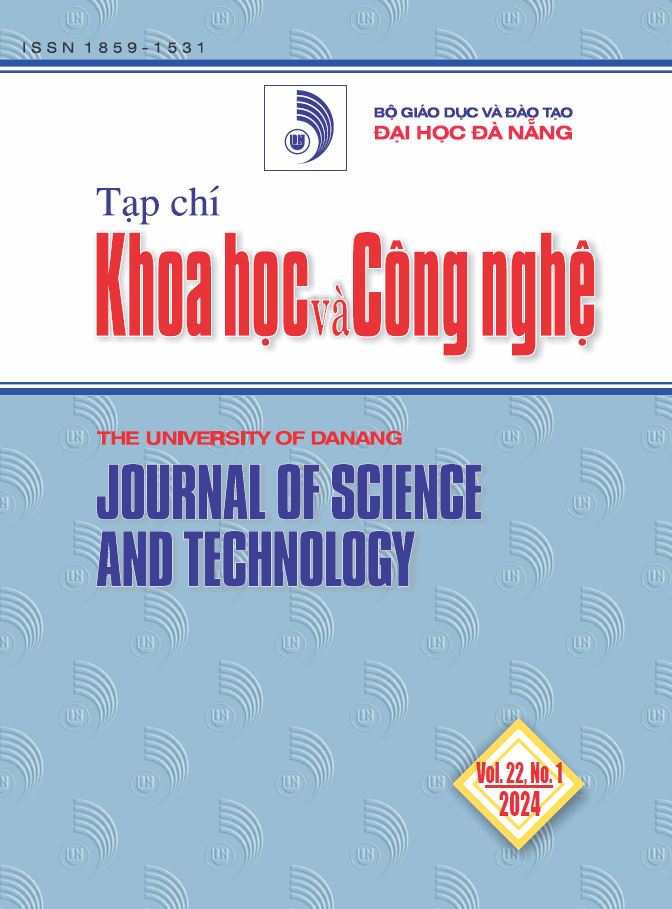Điều khiển hướng chuyển động cho xe tự lái để tránh va chạm
 Tóm tắt: 796
Tóm tắt: 796
 |
|  PDF: 566
PDF: 566 
##plugins.themes.academic_pro.article.main##
Author
-
Lưu Đức LịchTrường Đại học Bách khoa - Đại học Đà Nẵng, Đà Nẵng, Việt NamHuỳnh Vinh QuangTrường Đại học Bách khoa - Đại học Đà Nẵng, Đà Nẵng, Việt NamNguyễn Đắc ThànhTrường Đại học Bách khoa - Đại học Đà Nẵng, Đà Nẵng, Việt NamPhạm Quốc TháiTrường Đại học Bách khoa - Đại học Đà Nẵng, Đà Nẵng, Việt NamPhạm Hữu TruyềnTrường Đại học Sư phạm Kỹ thuật Vinh, Nghệ An, Việt Nam
Từ khóa:
Tóm tắt
Việc điều khiển phương tiện tự lái đang là chủ đề được rất nhiều người quan tâm hiện nay bởi những ưu điểm như tăng độ an toàn, rút ngắn thời gian di chuyển, giảm chi phí đi lại, giảm ùn tắc giao thông. Khi di chuyển trên những con đường, các phương tiện tự lái có thể phát hiện được các chướng ngại vật cố định trên cùng làn đường. Bài báo này đề xuất một giải pháp thiết lập quỹ đạo chuyển động mong muốn được sử dụng để tính toán đường đi sao cho xe tự lái có thể vượt qua các chướng ngại vật cố định trên cùng làn đường di chuyển. Hàm quỹ đạo mong muốn, dựa trên thông tin từ các cảm biến về khoảng cách đến các phương tiện phía trước, tính toán thời điểm để vượt qua chướng ngại vật. Kịch bản quỹ đạo mong muốn được đề xuất thường xuyên gặp trong thực tế khi xe di chuyển, trong đó các chướng ngại vật cố định là xe phía trước đang dừng lại. Kết quả đã chứng minh tính hiệu quả của giải pháp thiết lập quỹ đạo đề xuất.
Tài liệu tham khảo
-
[1] Badue et al., “Self-driving cars: A survey”, Expert Systems with Applications, Vol. 165, 113816, 2021.
[2] Paden, M. Cap, S. Z. Yong, D. S. Yershov, and E. Frazzoli, “A survey of motion planning and control techniques for self-driving urban vehicles”, IEEE Transactions on intelligent vehicles, vol. 1, no. 1, pp. 33-55, 2016.
[3] Rajamani, Vehicle Dynamics and Control. New York, USA: Springer, 2011.
[4] Jiang, J. and Astolfi, A., 2018. “Lateral control of an autonomous vehicle”. IEEE Transactions on Intelligent Vehicles, vol. 3, no. 2, pp.228-237.
[5] Lin, Y. Zhang, Y. Zhao, G. Yin, H. Zhang, and K. Wang, “Trajectory tracking of autonomous vehicle with the fusion of DYC and longitudinal–lateral control”, Chinese Journal of Mechanical Engineering, vol. 32, No. 16, pp.1-16, 2019.
[6] L. Luu, C. Lupu, H. Alshareefi, and L. Ismail, “Real-Time Longitudinal Control for Autonomous Mobile Robot Platform Using Multiple Infrared Sensors”, In 2021 25th International Conference on System Theory, Control and Computing (ICSTCC), Romania, 2021, pp. 6-11.
[7] Lee and D. Kum, “Collision avoidance/mitigation system: Motion planning of autonomous vehicle via predictive occupancy map”, IEEE Access, vol. 7, pp. 52 846–52 857, 2019.
[8] Lin, Y. Zhang, Y. Zhao, G. Yin, H. Zhang, and K. Wang, “Trajectory tracking of autonomous vehicle with the fusion of DYC and longitudinal–lateral control”, Chinese Journal of Mechanical Engineering, vol. 32, no. 1, 2019.
[9] Li, Z. Li, Z. Yu, B. Zhang, and N. Zhang, “Dynamic trajectory planning and tracking for autonomous vehicle with obstacle avoidance based on model predictive control”, IEEE Access, vol. 7, pp. 132 074–132 086, 2019.
[10] Ioannou and C. Chien, “Autonomous intelligent cruise control”, IEEE Transactions on Vehicular Technology, vol. 42, no. 4, pp. 657–672, 1993.
[11] Wang and B. Ayalew, “A probabilistic framework for tracking the formation and evolution of multi-vehicle groups in public traffic in the presence of observation uncertainties”, IEEE Transactions on Intelligent Transportation Systems, vol. 19, no. 2, pp. 560–571, 2018.
[12] Pauca, A. Maxim, and C.F. Caruntu, “Cooperative platoons merging for obstacle avoidance on highways”, In 2021 25th International Conference on System Theory, Control and Computing (ICSTCC), Romania, 2021, pp. 25-30.
[13] Akka, and F. Khaber, “Optimal fuzzy tracking control with obstacles avoidance for a mobile robot based on Takagi-Sugeno fuzzy model”, Transactions of the Institute of Measurement and Control, vol. 41, no. 10, pp. 2772-2781, 2019.
[14] Ali, Sharma, A. Haque, and M. Saifuzzaman, “The impact of the connected environment on driving behavior and safety: A driving simulator study”, Accident Analysis & Prevention, vol. 144, pp. 105643, 2020.
[15] Gao, D. Chu, Y. Cao, L. Lu, and C. Wu, “Multi-lane convoy control for autonomous vehicles based on distributed graph and potential field”, In IEEE Intelligent Transportation Systems Conference, Auckland, New Zealand, 2019, pp. 2463–2469.
[16] Atagoziev, G. Schmidt, and W. Schmidt, “Lane change scheduling for connected and autonomous vehicles”, Transportation research part C: emerging technologies, vol. 147, pp. 103985, 2023.
[17] Goli and A. Eskandarian, “MPC-based lateral controller with lookahead design for autonomous multi-vehicle merging into platoon”, in American Control Conference, 2019, pp. 5284–5291.
[18] Huang, D. Chu, C. Wu, and Y. He, “Path planning and cooperative control for automated vehicle platoon using hybrid automata”, IEEE Transactions on Intelligent Transportation Systems, vol. 20, no. 3, pp. 959–974, 2019.
[19] D. Phuoc, Linear control theory, Science and Technology Publisher, 2007.
[20] R. Isermann, Automotive control: modeling and control of vehicles, Berlin/Heidelberg, Springer, 2022.



